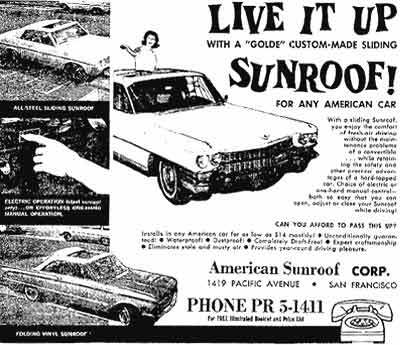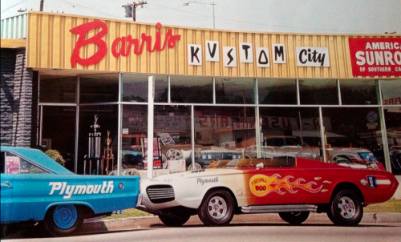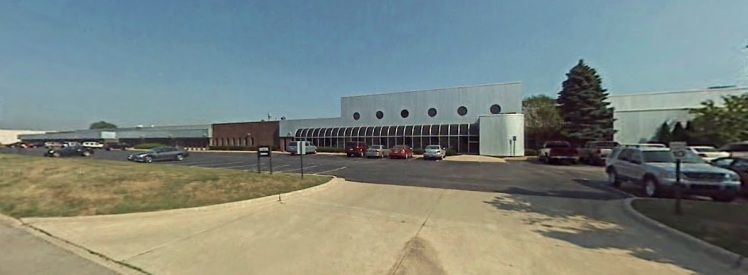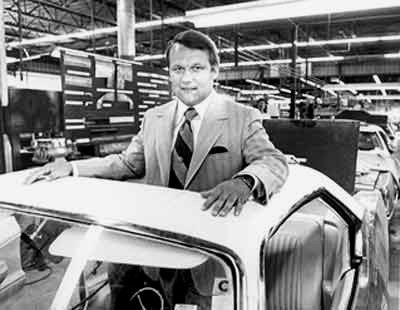The History of American Sunroof Corporation
This is an abbreviated version of Mark’s article – and geared toward the Mopar enthusiast.
The original article by Mark Theobald (2004) can be found at: http://www.coachbuilt.com/bui/a/asc/asc.htm
American Sunroof Company (ASC) was founded in late 1963 by Heinz Christian Prechter. Born on January 19, 1942, Prechter was raised on his family’s Bavarian farm. He was fascinated by automobiles from an early age and entered the automotive apprenticeship program at the local Berufschule (vocational school) when he was 13. After school Prechter worked at his uncle’s auto repair shop, and following the successful completion of his studies, he was accepted at the Nuremburg Berufs-Oberschule (upper vocational school) where he interned at Deutz (diesel engines & tractors), Faunwerke (trucks and military vehicles) and Siemens (electronics).
Following his graduation, Prechter was accepted into the mechanical engineering program at the prestigious Georg Simon Ohm Polytechnic in Nuremberg. While attending Ohm Polytechnic, Prechter had become friends with Hans-Dieter Golde, the son of Hans Traugotte Golde, the founder of Hans Traugotte Golde & Company, an early manufacturer of sliding canvas and metal sunroofs. Golde roofs were optional equipment on 1950s-1960s BMWs, Porsche 356s and Volkswagen Type 1 (Beetle), Type 14 (Karmann Ghia) and Type 2 (Kombi & Samba).
In 1961, Prechter jumped the pond and studied business administration and English at Cal-State. While finishing up school, he worked part-time for a small San Francisco body shop owned by a Mr. Forster. He suggested that they get into the sunroof business and using his Golde family connection, Prechter was awarded Golde’s west coast distributorship. In late 1963, Golde and Forster formed the American Sunroof Corp. and started advertising in the local papers.

American Sunroof’s first customers were regional San Francisco and San Mateo new car dealers and although Prechter had originally planned on staying in the US for a single year, he decided to stay and applied for a working visa which was granted in December of 1964.
Business at American Sunroof’s San Francisco workshop steadily improved and in January of 1965 Prechter opened up a branch in Los Angeles. Car customizer George Barris had a garage for rent behind his California shop, and it was here that Prechter established American Sunroof’s first metro Los Angeles branch. Early on, Prechter put sunroofs in cars owned by Hollywood celebrities who included Frank Sinatra, James Garner and Steve McQueen. A number of mid-60s Barris-built show cars also featured sunroofs installed by ASC. Barris’ 1965 Buick Wildcat-based Mystique showcar and personal tangerine 1966/67 Riviera both had them.

ASC caught a huge break in 1967 when one of the major American auto manufacturers approached Barris to see if he could install a limited number of sunroofs in one of their production vehicles. Prechter was the man Barris recommended for the job. Prechter completed the first batch of cars in June of 1967 in a former car wash located in Ecorse, Michigan, a few blocks west of the Detroit River. The car wash conveniently backed up to a small railroad yard where the cars were offloaded from rail cars and parked awaiting the conversion process. When one batch of cars were completed, a new batch was sent and the finished units were picked up.
Additional orders for ASC’s sunroofs continued for the 1968 model year. The major auto manufacturer, who shall remain nameless, expanded the availability of Prechter’s sunroofs to a few other models. This caught the attention of Chrysler, and a deal was struck with Prechter to install the ASC power sunroof in Dodge Chargers for the 1969 model year. Only around 400 1969 Chargers received the big power slider. But the Chrysler brass must have liked the option, because they offered up the option for 1970 despite the low production/sales figures.

In 1970, the power sunroof continued on the Charger, and was expanded to the new Challenger model. Prechter and company quickly outgrew the facility on Southfield Road in Ecorse, and relocated to a larger facility at 13500 Reeck Road in Southgate. Additionally, 1970 Charger production was completely shifted to the St. Louis assembly plant to make room at the Hamtramck assembly plant for the new 1970 Challengers. Once again, production numbers for the power sunroof were not stellar. But the power sunroof would continue into the 1971 model year. Again, the power sunroof would continue to be offered on the 1971 Dodge Chargers and Challengers, but was expanded to the Plymouth B-Body line, the Chrysler C-Body line, and to the Imperial platform.

For the 1972 model year, the power sunroof was offered on all the same platforms as in 1971, with one exception. The option would finally be offered on the Plymouth Barracuda line, the one and only year you could get a slider on a Plymouth E-Body. Through the 1972 model year, all cars that got the power sunroof were either shipped off to an American Sunroof installation facility, or were pulled into a side room near the assembly line where ASC employees installed the sunroof. This would change for the 1973 model year.
With all the extra logistics involved in offering a power sunroof, you might think that this option was an expensive one. You would be correct! The price tag for this option was north of $450! To put this in perspective, a base 318 Charger sold for $3109 in 1969. Chrysler product planners likely realized how expensive this was, and worked with ASC to offer something a little more affordable to increase installation rates and profits. The answer would come in 1973. ASC developed a manual sunroof kit for Chrysler that could be installed by Chrysler employees right on the assembly line. No more shuttling cars to and fro, and a manual sunroof was less expensive than a power slider. This change dropped the price on the sunroof option by over 200 dollars.
Several changes took place for the 1973 model year. The power sunroof was not completely dead – it was still offered on Imperials and Chrysler C-Body cars. The new manual sunroof was still available on Dodge and Plymouth B-Bodies, but the sunroof option was no longer offered on Challengers and Barracudas. Additionally, the new manual sunroof was now available on Dodge and Plymouth A-Bodies. The decrease in price for the manual sunroof option increased sales tremendously. Customers were checking off the box for the sunroof at a rate of 4x to 8x more than in previous years.
To be continued….